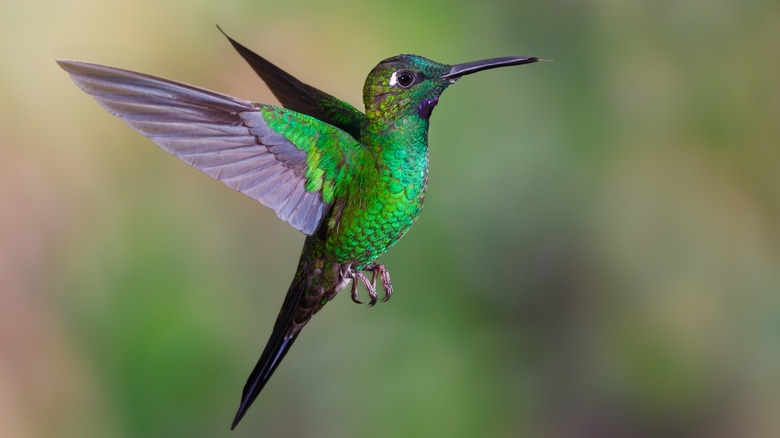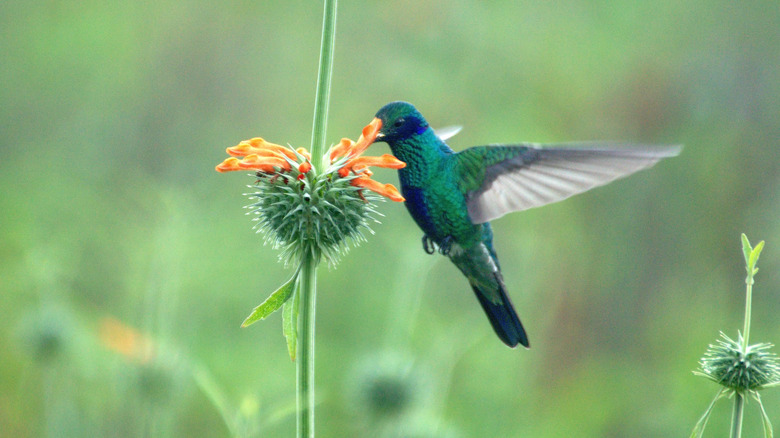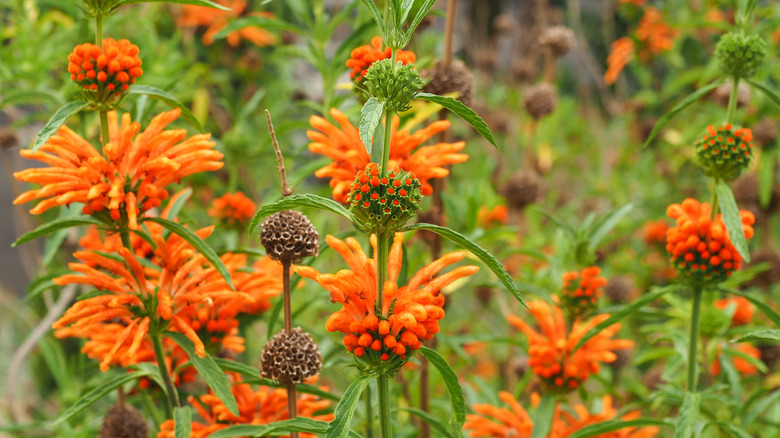The Beautiful Flower That Will Have Hummingbirds Flocking To Your Yard
Stunning, lightning fast, and beneficial to many plants, hummingbirds are among the most desired creatures in a gardener's yard. As pollinators, hummingbirds play a crucial role in plant life cycles and local ecosystems. Sadly, many hummingbird species are at risk due to climate change and habitat loss, meaning it's more important than ever to provide nutritious plants for them to feast on. One aesthetically pleasing flower that will turn your yard into a hummingbird haven is Leonotis leonurus — which commonly goes by the name lion's ear, lion's tail, or lion's claw.
Lion's ear is a fast-growing perennial shrub in USDA plant hardiness zones 8-11. With double-lipped, tubular orange flowers, lion's ear is as pleasing to the eye as it is beneficial for pollinators. Sow these seeds in the early spring and enjoy brightly colored flowers starting in late spring and lasting into early winter. Depending on your location, the plant may freeze in the winter, but with proper care, it will come back for years to come.
Attracting hummingbirds with lion's ear
While there are many ways to bring hummingbirds into your garden, growing brightly-colored, long-flowering plants like lion's ear is one of the best. Some birdwatchers default to setting out hummingbird feeders with sugar water. However, hummingbird feeders can attract pests and raise concerns since the presence of mold in a feeder can be deadly to the beautiful birds. Wherever possible, planting flowers is the best way to keep your winged friends happy while enjoying their presence in your outdoor space.
As pollinators, hummingbirds require the nectar of flowers in order to stay alive. As climate change continues to impact hummingbird habitats, they need the help of gardeners more than ever. Lion's ear plants flower from spring until early winter and are resistant to other wildlife like deer and insects. This makes lion's ear an excellent source of food for hummingbirds as well as butterflies and bees. For even more pollinator power, plant a variety of companion plants and add bee watering stations throughout your yard. The more you can become an oasis for these important species, the more beautiful and buzzing your garden will become.
Tips for growing lion's ear
When selecting an ideal space to plant lion's ear, consider its size and its soil preferences. This shrub can grow large quite quickly, sometimes reaching a size of 5 feet tall and 4 feet wide, so be sure to give it ample space. Native to South Africa, lion's ear is a drought-resistant plant species and sensitive to overwatering. It loves the heat and should be planted in full sun, where it can thrive in at least six hours of sunlight each day.
As a member of the mint family, lion's ear will self-seed and spread where allowed. In order to keep your plants full and bushy, prune them once they've finished flowering for the year. As a bonus, lion's ear flowers make an excellent addition to cut bouquets! Especially in areas with a winter freeze, apply mulch around the plants to help them make it to the next growing season.



